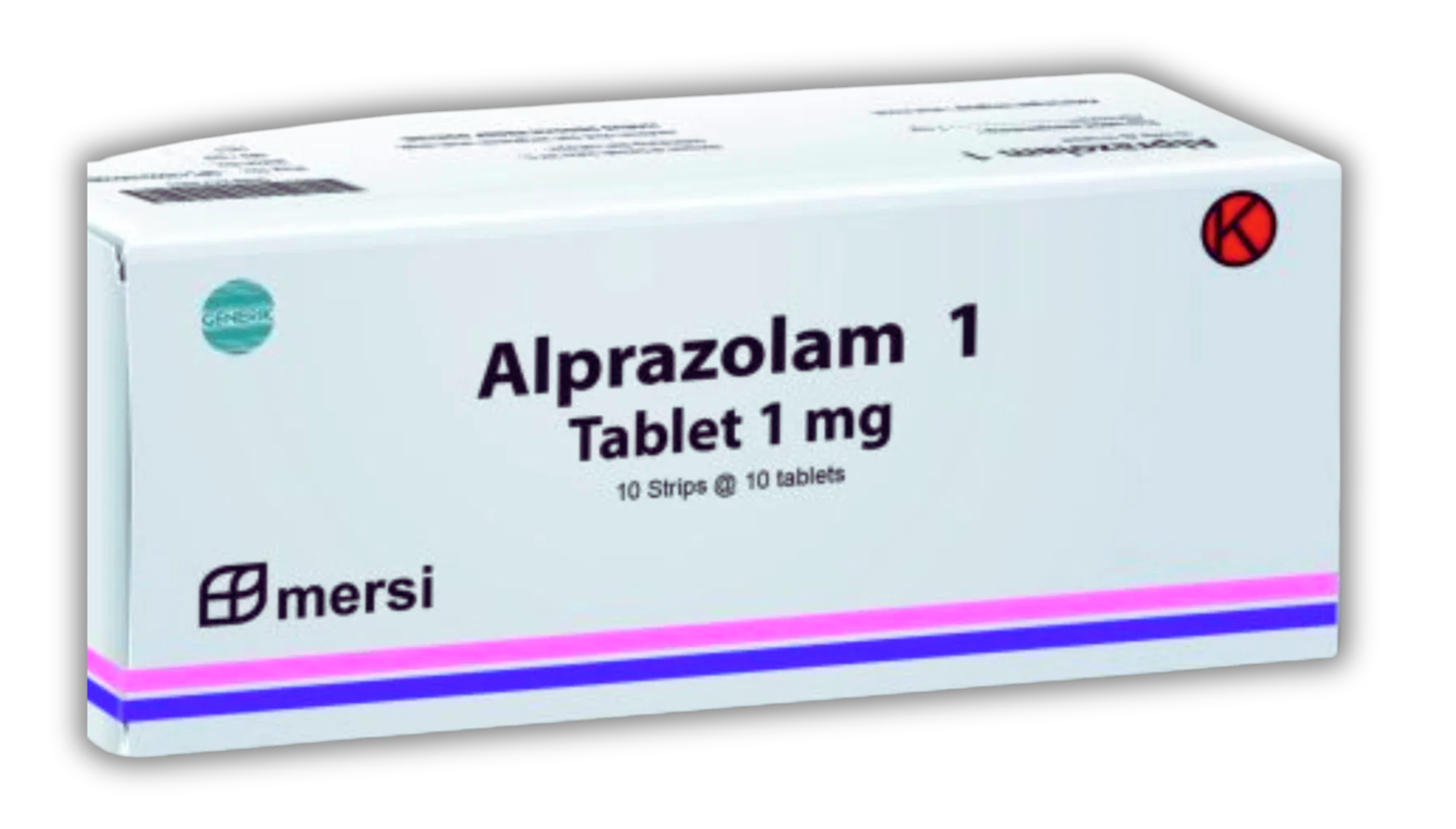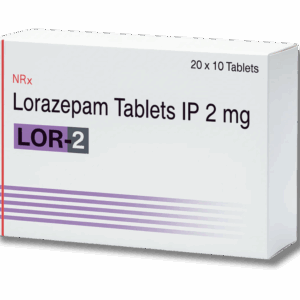Alprazolam is a prescription medicine used to treat anxiety and panic disorders. It belongs to a group of medicines called benzodiazepines. These medicines work on the brain and nerves to help calm you down. Alprazolam is often better known by the brand name Xanax.
People usually take alprazolam by mouth. It’s known for providing fast relief from anxiety symptoms. If you’re using alprazolam, you should keep an eye out for side effects and be aware of the risk of dependency, especially with long-term use.
What Is Alprazolam?
Alprazolam is a prescription medication for anxiety and panic disorders. It works by calming the brain and nerves, and you’ll most commonly see it as Xanax.
Classification and Chemical Structure
Alprazolam falls under benzodiazepines, which act as central nervous system depressants. These drugs slow down brain activity, leading to that calming effect people seek.
Chemically, alprazolam is a triazolobenzodiazepine. It’s got a triazole ring fused to the usual benzodiazepine structure. The molecular formula is C17H13ClN4. Most people take it by mouth as a tablet.
Key facts:
- Brand names: Xanax, among others
- Drug class: Benzodiazepine
- Form: Usually tablet or extended-release tablet
Mechanism of Action
Alprazolam boosts the activity of gamma-aminobutyric acid (GABA), a natural chemical in your brain that helps reduce nerve activity. When GABA works better, you tend to feel more relaxed.
As GABA’s effects increase, signals in the brain slow down. This can lower anxiety, panic, and nervousness. Other benzodiazepines work in a similar way, calming the central nervous system.
Effects:
- Reduces anxiety and panic symptoms
- Causes drowsiness and muscle relaxation
- May cause side effects like dizziness or loss of coordination
Prescription Status and Regulation
Alprazolam is a controlled substance in the United Kingdom and many other countries. You can only get it with a prescription from a licensed healthcare professional.
The medicine is regulated due to risks of dependence and misuse. In the UK, alprazolam is a Class C controlled drug. In the United States, the FDA has approved it but also marked it as a controlled medicine.
Regulatory details:
| Country | Prescription Only | Controlled Substance Status |
|---|---|---|
| United Kingdom | Yes | Class C |
| United States (FDA) | Yes | Schedule IV |
Pfizer is one of the companies that makes and supplies alprazolam in various markets. These regulations are there to help keep people safe and make sure the medicine is used only when needed.
Therapeutic Uses and Dosage
Alprazolam is a prescription medicine that calms the central nervous system. Doctors mainly use it to treat anxiety disorders and panic disorders. It’s usually prescribed for short periods because of the risk of dependence.
Treatment of Anxiety Disorders
Doctors often use alprazolam to treat generalised anxiety disorder (GAD) and related conditions. It helps with symptoms like constant worrying, nervousness, and tension.
This medication is sometimes considered when other treatments haven’t worked or when quick relief is needed. Doctors usually start with the lowest possible dose for a short time to reduce side effects or dependence.
Starting doses are small and adjusted as needed. Alprazolam isn’t meant for long-term use for most anxiety disorders because of the risks of tolerance and misuse.
Some people might get alprazolam for short-term relief during specific stressful situations. However, regular monitoring is important. It’s not a first-choice medicine for insomnia or premenstrual syndrome, but sometimes doctors use it off-label.
Panic Disorder and Associated Conditions
Doctors often prescribe alprazolam for panic disorder, with or without agoraphobia. Panic disorder brings sudden, intense fear and physical symptoms like a fast heartbeat or trouble breathing. Alprazolam calms the brain, which can reduce the number and intensity of panic attacks.
For panic disorder, the dosage might be higher than for general anxiety. Patients usually start with a low dose that can be increased as needed. The medicine can also help with agoraphobia that comes with panic attacks.
It’s important for patients to have regular check-ins with their doctor to watch for side effects, possible misuse, or the need to adjust the dose.
Dosage Forms and Administration
Alprazolam comes as tablets and extended-release tablets. The standard version is usually taken two or three times a day, while the extended-release form is taken once daily.
Dosage depends on the condition, age, and health of the patient. For adults with anxiety, common starting doses are 0.25 mg to 0.5 mg three times daily, with adjustments as needed. Panic disorder often starts at a similar dose but may be increased more quickly depending on response.
Never stop alprazolam suddenly without talking to your doctor, as this can cause withdrawal symptoms. Don’t mix alprazolam with alcohol or other medicines that slow the central nervous system, like prescription painkillers, unless your doctor says it’s okay.
| Condition | Starting Dose | Maximum Dose |
|---|---|---|
| Anxiety Disorders | 0.25–0.5 mg, 3x/day | 4 mg/day |
| Panic Disorder | 0.5 mg, 3x/day | 10 mg/day |
Side Effects and Safety Considerations
Alprazolam can cause both mild and serious side effects. You should know about risks like dependence, withdrawal, and problems during pregnancy or breastfeeding.
Common Side Effects
Some of the most common side effects are drowsiness, dizziness, sedation, and feeling tired. These can make it risky to drive or use machinery.
Headache, lightheadedness, and dry mouth also pop up quite a bit. Stomach problems like nausea, vomiting, constipation, or diarrhoea are possible. Some people notice weight changes while taking alprazolam.
Memory issues, trouble sleeping, and coordination problems can happen too. Most mild side effects get better as your body adjusts, but if anything sticks around or really bothers you, talk to your doctor.
Common Symptoms Table:
| Symptom | Frequency |
|---|---|
| Drowsiness | Common |
| Dizziness | Common |
| Sedation | Common |
| Headache | Occasional |
| Nausea/Vomiting | Occasional |
| Constipation | Occasional |
| Dry mouth | Occasional |
Serious Adverse Reactions
Some side effects are more serious and need urgent care. These include severe confusion, hallucinations, seizures, trouble breathing, and allergic reactions with swelling or rash.
An overdose can cause breathing problems, loss of consciousness, or even death. Rarely, people have paradoxical reactions like more anxiety, irritability, aggression, or strange movements.
Older adults are at higher risk for things like falls, coordination problems, or speech difficulties. Suicidal thoughts and deep depression have been reported in some cases.
If you notice any of the following, get medical help right away:
- Difficulty breathing or swallowing
- Unusual muscle movements
- Severe confusion or memory loss
- Jaundice (yellowing of eyes or skin)
Withdrawal and Dependence
Using alprazolam for several weeks can lead to physical dependence. Stopping suddenly often brings withdrawal symptoms, which can be rough.
Withdrawal might show up as anxiety, restlessness, irritability, trouble sleeping, muscle cramps, or sweating. Sometimes, withdrawal can cause seizures, hallucinations, or, in rare cases, life-threatening problems.
People who’ve used high doses or taken alprazolam for a long time are at greater risk. Doctors should always supervise any dose change or stopping the medicine. Tapering off slowly helps prevent withdrawal issues and keeps things safer.
Common Withdrawal Symptoms List:
- Anxiety
- Insomnia
- Irritability
- Muscle cramps
- Seizures
Risks During Pregnancy and Breastfeeding
Alprazolam isn’t considered safe during pregnancy, especially in the first trimester. Use during pregnancy can cause birth defects, low muscle tone, feeding problems, or withdrawal symptoms in newborns.
There’s also a risk of breathing problems or odd movements in babies exposed to alprazolam before birth. While breastfeeding, alprazolam passes into breast milk and can cause drowsiness, breathing trouble, feeding problems, or poor weight gain in infants.
Because of these risks, doctors usually only recommend alprazolam during pregnancy or breastfeeding if there’s no safer option and the benefits are worth it. Moms should always talk with their doctor before starting or continuing alprazolam during these times.
Interactions and Contraindications
Alprazolam can interact with certain medicines, foods, or medical conditions. This can affect how safe or effective it is. Pay close attention if you have liver disease, mental health needs, or are older.
Drug and Food Interactions
Alprazolam interacts with quite a few medicines and foods. CNS depressants—like antihistamines, prescription painkillers, and alcohol—can increase drowsiness or cause breathing problems when combined with alprazolam.
Mixing alprazolam with other sedatives can raise the risk of severe sedation. Azole antifungals (like itraconazole and ketoconazole) can increase alprazolam levels and make side effects worse.
Grapefruit and grapefruit juice slow down how the body clears alprazolam, so side effects can get worse. Some herbal products, such as St. John’s wort, might make alprazolam less effective.
It’s important to tell your doctor about all medicines and supplements you’re taking to avoid any bad interactions.
Medical Conditions and Contraindications
Alprazolam isn’t safe for everyone. People with acute narrow-angle glaucoma shouldn’t use it because it can raise eye pressure.
Liver disease changes how your body handles alprazolam, which can make side effects more likely. If you’ve ever struggled with a substance use disorder, you face a higher risk of getting dependent on alprazolam.
Anyone dealing with depression, suicidal thoughts, or other mental health problems needs extra caution. Alprazolam sometimes masks symptoms or even increases certain risks.
Precautions for Special Populations
Some groups really need to be careful with alprazolam. Older adults feel the sedating effects more and face a higher risk of falls, confusion, or balance issues.
Doctors usually recommend lower doses for older folks. Women who are pregnant or breastfeeding should avoid alprazolam since it can harm the baby.
This medication passes into breast milk and might affect a newborn’s breathing or development. Kids and teenagers usually don’t take alprazolam unless it’s truly necessary.
People juggling several chronic health problems should get a thorough review of their conditions and medications before starting alprazolam.
Frequently Asked Questions
Alprazolam mainly treats certain mental health conditions. It works by changing brain chemicals that might be out of balance.
What are the potential side effects of taking Alprazolam?
Some folks feel drowsy, tired, or dizzy after taking alprazolam. Less common side effects include memory trouble, confusion, or mood changes.
In rare cases, allergic reactions or breathing problems can happen, and you should get medical help right away if that occurs.
For what conditions is Alprazolam commonly prescribed?
Doctors usually prescribe alprazolam for anxiety disorders or panic disorder. Sometimes, it’s used for anxiety linked to depression.
How does Alprazolam exert its effects on the nervous system?
Alprazolam increases the activity of a brain chemical called gamma-aminobutyric acid (GABA). That calming effect helps lower anxiety and panic.
Is Alprazolam an effective treatment for sleep disorders?
Doctors don’t typically use alprazolam for sleep problems. Sure, it can make you drowsy, but it’s really meant for anxiety and panic.
If you’re struggling to sleep, your doctor will probably suggest something else.
What are the recommended dosage guidelines for Alprazolam?
Most adults start with a low dose, and doctors adjust it if needed. For anxiety, typical doses range from 0.25 mg to 0.5 mg, three times a day.
Panic disorder sometimes requires higher doses, but only with close medical supervision.
How does Alprazolam differ from Xanax in terms of chemical composition and use?
Alprazolam and Xanax actually share the same active ingredient. Xanax is just the brand name, while alprazolam stands as the generic version.
Both have the same chemical structure. Doctors use them for the same medical reasons.


